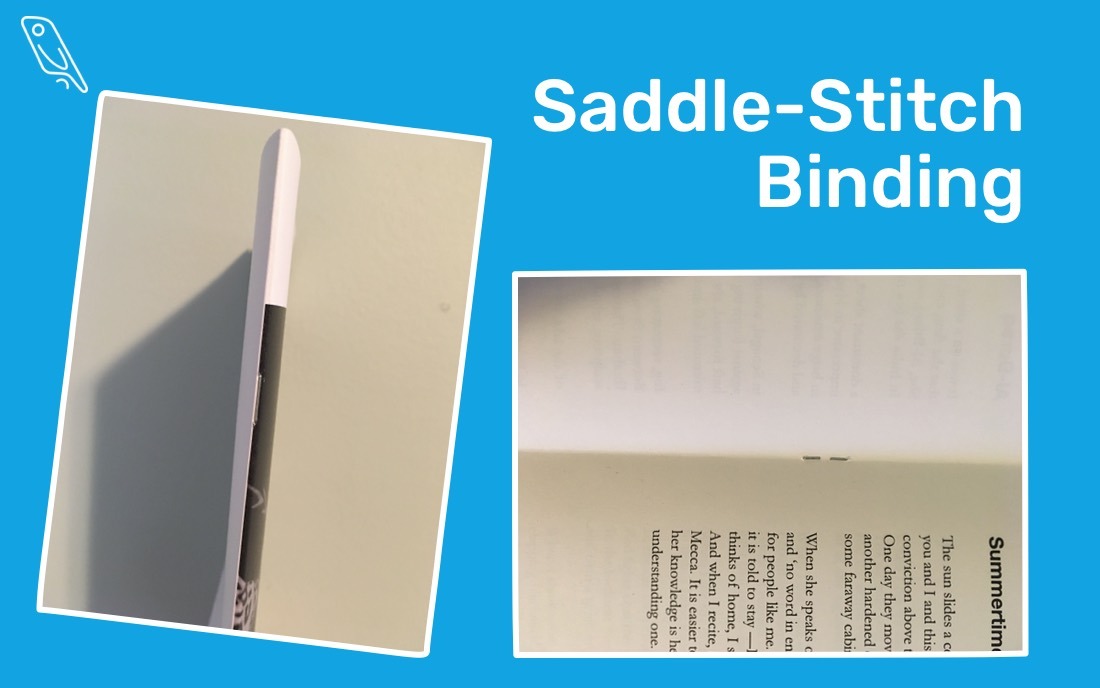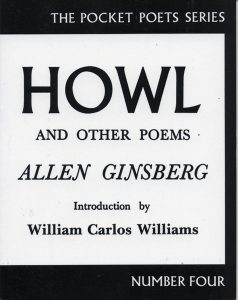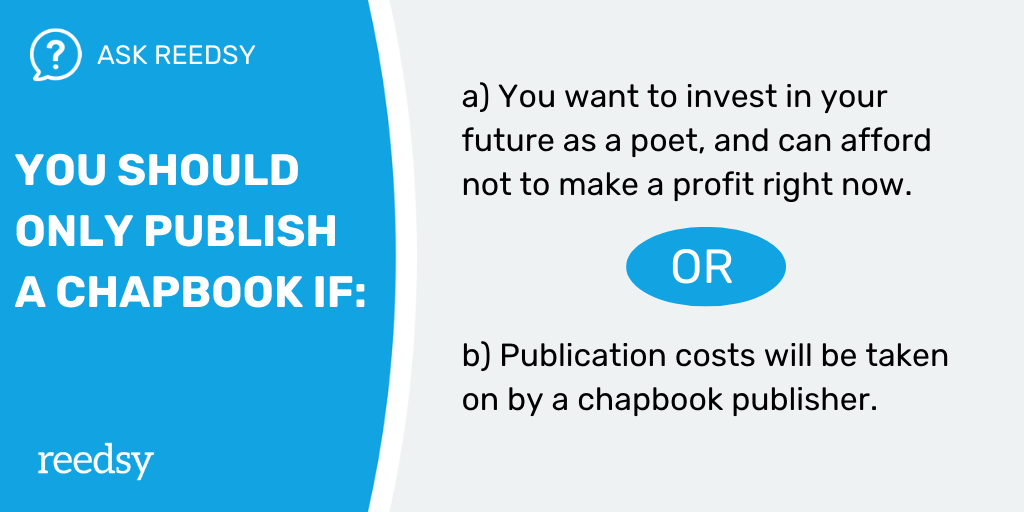Guides • Understanding Publishing
Last updated on Oct 15, 2025
What is a Chapbook? (And Should You Publish One?)
Martin Cavannagh
Head of Content at Reedsy, Martin has spent over eight years helping writers turn their ambitions into reality. As a voice in the indie publishing space, he has written for a number of outlets and spoken at conferences, including the 2024 Writers Summit at the London Book Fair.
View profile →Answer: A chapbook is a short book of poetry, usually ranging between 20-40 pages — in the UK, chapbooks are often called “pamphlets”, but they’re pretty much the same thing.
While developing novelists and short story writers are, these days, often going digital-first, emerging poets are finding new readers through these charming, printed booklets.
In this guide, we'll take a look at some of this medium's defining characteristics, the reasons why a poet might want to put out a chapbook, and how you can publish one. So let's get started.
Chapbooks are, by necessity, quite short
Since poems vary a lot in length, there’s no single established number of poems per chapbook. There could be a poem on every page or a handful of longer-form pieces spanning several pages each. The book could technically be a single, long poem, but this is very unusual, as chapbooks generally function as writing portfolios for poets, displaying their oeuvre and range (more on that below).
Note: A minority of chapbooks will feature short-form prose, like short stories or essays. Since poetry is far more common, our focus in this post will be on that. You can read more about short stories here.
Q: What's the best piece of writing advice for an author who wants to improve their craft?
Suggested answer
Join critique groups! These were invaluable to me when it I started writing and even taught me how to edit! Reading books will become dated with old advice, so stay up to date with blogs, trends, audiences, and read, read, read!
Stephanie is available to hire on Reedsy ⏺
Practice and read!
In the same way that you need to practice a musical instrument to get better, you need to do the same with writing too. Very few writers will publish the first book they ever write!
The other thing that will help you to improve your writing craft is reading. Read the books that are selling well in your genre right now, not just the bestsellers from a decade ago. Study them. Look at the reviews for these books and listen to what readers are saying.
There are loads of brilliant books that will help you to write an effective novel as well (Into the Woods by John Yorke, The Science of Storytelling by Will Storr, Story Genius by Lisa Cron and Save the Cat Writes a Novel by Jessica Brody are a few of my favourites). Even if you don't agree with everything they say (I don't necessarily agree with every piece of advice in the above!) it's so helpful to see a range of different perspectives. You'll also quickly be able to see the patterns and advice from these books in the bestsellers you read. There are also loads of podcasts, blog posts, YouTube videos and audiobooks out there too, as well as Reedsy's own masterclasses!
Siân is available to hire on Reedsy ⏺
Chapbooks are typically saddle-stitched — which means that they're bound with just a couple of staples along the spine, as below. The trim measurements will vary, but these days, you will commonly see chapbooks in a 6" x 9" format (the size of ARCH B paper folded in half).

Because of this saddle-stitching, the page count must be quite short. UK chapbooks (ahem, pamphlets) rarely exceed 40 pages — which is 10 pieces of paper folded in half. If you've ever tried to fold a stack of printer paper more than ten sheets thick, you'll see where the problem lies.
Fun fact: The prestigious Felix Dennis Prize is awarded to poets for their "first collections" — books of 40+ pages. To increase their chances of winning, poets often establish themselves before releasing their "first collection".
The poems within each chapbook tend to be connected by a thematic or formal link. They might all be odes, elegies, or reinterpretations of mythology. For example, Vanessa Jimenez Gabb’s Weekend Poems is a collection of poems related to quotidian life, ordinary moments like watching Netflix or going to the gym. Similarly united by theme, the poems in Kaveh Akbar’s Portrait of the Alcoholic center around the poet’s recovery from addiction.
They were the voice of the American counterculture
The form itself dates as far back as the 18th century, though it was not exclusively associated with poetry at that stage. The modern chapbook can be traced back to the American Beat poets of the 1950s and 60s, when chapbooks provided a way to disseminate counterculture thinking without industrial printing presses. And though small, these poetry books were mighty!

With the advent of the internet, the modern chapbook took off in more creative directions, now sometimes taking the form of a PDF download, or a very short ebook (if the latter sounds interesting, check out our guide on how to publish an ebook). But that’s not to say that the traditional paper chapbook has lost its appeal.
Q: What daily writing routines can help authors maintain consistent productivity?
Suggested answer
+ Never underestimate the power of enough sleep. This can cure more things than we know - how we show up, what we're capable of tackling each day.
+ Nourishing food to fuel the mind.
+ Movement - even if it's a walk around the block listening to a podcast, music or just deep in thought (often the best times when ideas arise).
After these three things are locked in:
+ Quiet, undistracted time blocks (even if it means phone in another room for 90 mins)
+ A laptop that has nothing else except Word on it (no website access).
+ For those who are visual, keeping a yellow sticky note daily "checklist" on a wall, to encourage a daily writing tally.
+ Ask for feedback for continual improvement.
Leoni is available to hire on Reedsy ⏺
There are four things that I consider before settling in to write.
What sounds are there? The best is silence, but in a city environment this is impossible. If there are specific loud that I want to block out, I listen to drone music. This consists mostly of long, sustained notes (no melodies) and comes from the American and German post-war experimental musical traditions. The texture of the sounds is often rich which works for this purpose quite well. It has a meditative effect. Failing this, music without lyrics is also good.
What is my phone doing? Just switch it off.
Social media. Along with my phone, this is designed to distract. What I do is log out of my social media accounts. If I automatically go back in, I'm then met by the login page. This doesn't sound like much of a difference, but is just enough to nudge myself into becoming mindful of what I'm doing and what my present purpose it. And mindfulness is key.
Lastly, I take a page of Hemingway's advice: "The first draft of anything is s**t." It's ok to produce bad writing. In fact, it's totally ok; actually it's great. Why? Because my ideas are now down on the page, even if it's absolutely horrible. Nobody ever simply writes a finished product straight off the bat. I'll make it better later and that is a different process.
Don is available to hire on Reedsy ⏺
Get all domestic and admin chores out the way first, so that there is nothing else on your mind when you sit down to write. Then just stick at it for as long as possible.
Andrew is available to hire on Reedsy ⏺
In fact, the chapbook, historically indepedently produced and distributed by the poets themselves, continues to be held in high regard within the literary world, with indie presses and chapbook contests eager to find the next great poetic voice. Because of its unique role in the poetic community — one that has yet to be replaced by any other medium — the chapbook form is far from dead.
Before we get ahead of ourselves and go ‘all-in’ on chapbooks, let’s take a quick look at some of the benefits and drawbacks of publishing your poetry in this format.
A way for emerging poets to make their names

It’s been said many times in the publishing world that a chapbook is a poet’s calling card: a tantalizing sample of their work. Poet Jackie Kay writes that “[chapbooks] are the connoisseur's version of a very tasty starter. Straight away, they give you a sense of somebody, an idea of their voice, just enough to make you know that you'd like more — or not.” In other words, a chapbook is the perfect way for a newcomer to break into the literary industry.
It’s hard to get signed for your first poetry collection, so many poets begin their careers by sharing their work online, participating in events like open mic nights, submitting poetry to literary magazines, or releasing a poetry chapbook/pamphlet. These short books function as a serious first step into poetry publishing, and help establish your name and reputation.
For more information on how to submit your poetry to magazines and competitions, check out this blog post and this list of publications open for submissions.
Provided your chapbook is well-received, it can also increase your chances of having a full-length collection published down the line, as poetry editors at large and indie publishing companies alike stay up to date with new releases with an eye to adding new voices to their lists. At the same time, if your chapbook becomes commercially successful, that’ll give you an advantage when you get to a stage where you’re submitting your debut poetry collection to publishers, since it’s clear evidence that there’s an eager market for your work.
Pro tip: Most traditionally-published poets don’t actually need to find a literary agent to arrive at a book deal for their poetry collection. But if you're looking for representation, you can read this post for guidance.
Examples of chapbooks
Many of today’s established poets published chapbooks (often in limited editions) in the early stages of their careers:
- Carol Ann Duffy published William and the Ex-Prime Minister in 1992.
- Liz Lochhead published Memo for Spring in 1972.
- Ted Hughes published Animal Poems in 1967.
- Basil Bunting published The Spoils in 1965.
- T.S. Eliot published each poem of The Four Quartets in individual pamphlet form before they appeared in book form in 1943.
Q: What tools or apps actually make a difference in streamlining the writing process?
Suggested answer
Today we have a plethora of excellent software programs for writing, such as Reedsy Studio, Scrivener, and Grammarly. Some writers use ChatGPT, although I would not recommend using an AI generative language model to help writing. This is because it bypasses the process altogether, replacing the writer. What would be the point of that?
Even the oldest and best-known program, Microsoft Word is still excellent. But there is one older – far older – trick to helping the writing process. This is articulating your writing ideas out load. I'm sorry if it sounds mundane and less flashy!
It is surprising how difficult this can be sometimes. Often, a writer will have an idea or set of ideas but having never explained them aloud, might struggle with clarity at the detailed level. When reading over their work, they are reminded of the ideas; the writer is not merely reading here, they are remembering things that are not on the page!
So, trying to explain it to someone who does not know these ideas is crucial. This is why critique groups are an excellent way of improving one's writing. Often – after a deep explanation and perhaps some questions back and forth – I have heard the friend or other writer say, "ok, well write what you've just said!"
Don is available to hire on Reedsy ⏺
They are fairly inexpensive to make...
Chapbooks are a seriously low-cost option, especially if you plan to self-publish yours. Most poets opt for small print runs of more or less 150 copies (though this varies, depending on the size of each poet’s following), or cost-effective print-on-demand services. With either option, you avoid high upfront costs for printing and storage, so you can make your chapbook with a smaller budget. Add to that the fact that they’re saddle-stitch bound, and the cost becomes even lower.
...but also hard to profit from
![]()
Sure, chapbooks are inexpensive to make, but they’re also inexpensive to buy for the same reasons, so their profit margin is pretty slim. Equally, a small print run also means you’re unlikely to make a significant profit from the sales of your chapbook. As a result, chapbooks are not really a step you take with profit as your main goal. Their main function is to advance your career as a poet, so you should only publish one if:
- You’re content with the fact that, financially speaking, a chapbook will likely only be an investment for future success, OR
- A chapbook publisher takes on the costs of publication.
Whatever you decide, we hope this post has helped you understand what chapbooks are, what role they play, and whether you should publish one.
If it sounds like a chapbook is right for you, head to part two of this guide to learn how to make a chapbook!



